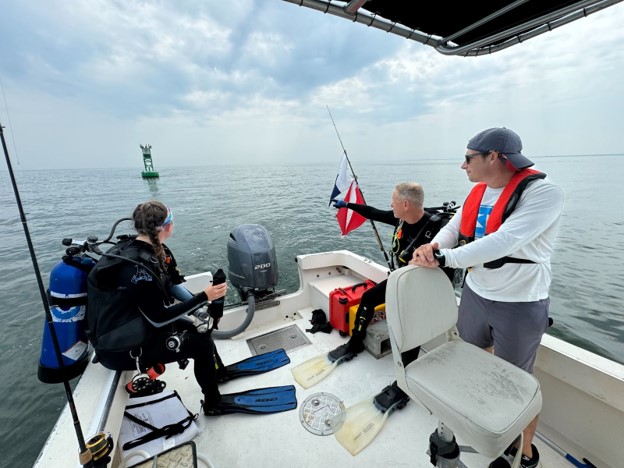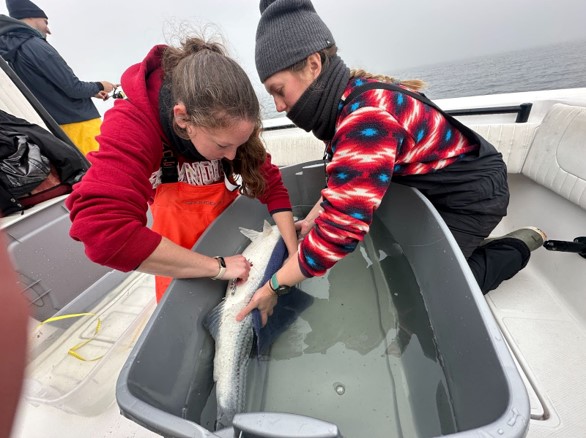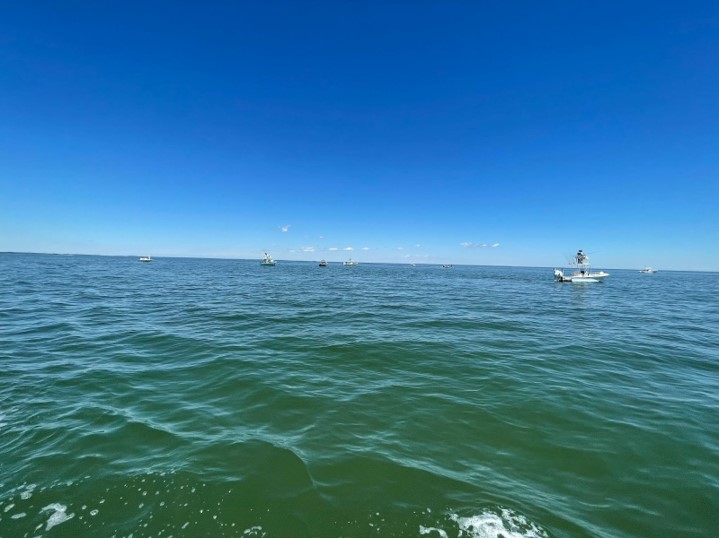
NCCOS scientists and partners have completed a field mission to retrieve valuable information on economically and recreationally important fish species within the Chesapeake Bay.

Many fish species are critically important to the Chesapeake Bay, attracting both commercial and recreational fishers. The fish stocks within the Chesapeake Bay help are vital food sources for the nation while improving the economy for Maryland, Virginia, and the United States.
As part of an ongoing project using acoustic telemetry – the process of collecting and transmitting data from remote sources using sensors and other devices – to track fish movement through the Chesapeake Bay, NCCOS scientists have conducted the first download of their acoustic data loggers. Since August 2024, the sensors have been tracking fish tagged with acoustic transmitters that relay data to receivers, which are attached to underwater fixtures in various locations throughout the bay. In partnership with local fishing guides, NCCOS scientists have tagged striped bass and red drum, which are important fisheries species. Each sensor transmits data related to the specific fish as well as the depth the fish is swimming and the water temperature at the time of recording. To date, the team has tagged 207 fish and installed 26 data loggers for this project.

To retrieve this data, the team of scientists set out on a boat operated by the NCCOS Cooperative Oxford Laboratory staff and dive to retrieve the devices. Scientists then download the data that has recorded tagged fish passing through the vicinity over the last nine months.
The data being captured tells scientists where these fish travel throughout the bay and helps them understand the environmental conditions, timing of migrations, and habitat each species prefers. In addition, this data will help inform fish stock assessment, and management decisions such as seasonal fisheries regulations, size limits, and habitat restoration projects.
This project supports NOAA’s Changing Ecosystems and Fisheries Initiative in partnership with NOAA’s Chesapeake Bay Office, Virginia Institute of Marine Science, University of Maryland Eastern Shore, and the Atlantic Cooperative Telemetry Network with support from Maryland Department of Natural Resources, Virginia Marine Resources Commission, and Atlantic States Marine Fisheries Commission. Learn more about this ongoing project.
This work is authorized by the Magnuson-Stevens Conservation Management Act, which governs marine fisheries in federal waters with the objective to increase long-term economic and social benefits, and ensure a safe and sustainable seafood supply, among other objectives.


